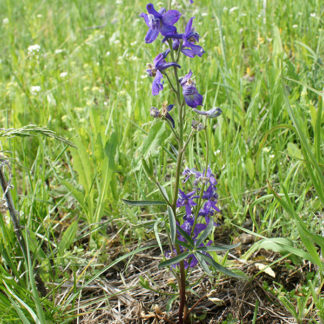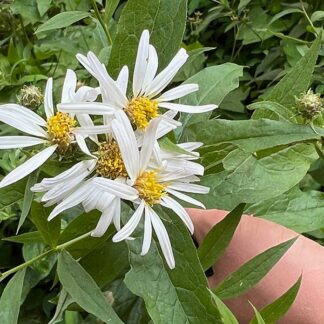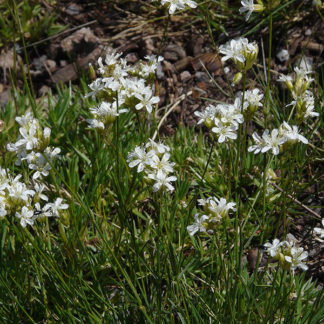one to several flowers
Showing 13–24 of 69 results
-

Collinsia parviflora / maiden blue-eyed Mary
- inconspicuous
- teeny blue and white flowers, singly or in small clusters
- reddish stems and buds more visible than the flowers
- wide variety of habitats, bare rocks to marshy fens
-

Collomia linearis / tiny trumpet
- teeny, tubular, lilac to white flowers
- flowers in clusters at top of stem in a basket of leaves
- velvety stem; long, narrow, lance-shaped leaves
-

Cornus sericea / red osier dogwood
- shrub with opposite branching and red bark, brightest in fall/winter
- common along streams especially
- small white flowers, 4 petals, in clusters
- white or blue-ish white berries in fall
- opposite leaves with parallel veins
-

Crataegus douglasii / black hawthorn
- slightly thorny shrub or small tree, to 30 feet
- often forms thickets
- broad leaves with toothed edges, clumped at ends of branches
- clumps of white, globe-shaped flowers in spring; prominent black anthers
- clumps of black "berries" in autumn
-

Danthonia californica / California oatgrass
- medium-sized, cool season bunchgrass
- florets widely spaced with long stalks on an open panicle
- may have flowering stems that appear wiry and crinkled
- when flowering, stamens are purple
-

Delphinium nuttallianum / upland larkspur
- Bright blue flowers, sometimes whitish or other color petals in center
- One or several flowers per stalk
- Long spur "behind" the flower
- Leaves mostly low on the stem - divided into several or many lobes
- Open meadows, near streams, with sagebrush, any elevation
- Beginning soon after snowmelt and sometime persisting into September
-

Dianthus armeria / Deptford pink
- PINK! 5 petaled, very small flowers
- Toothed edges; white spots on petals, numerous stamens
- Linear, opposite leaves; bases make sheath around stem
- Disturbed areas; happy enough in the worst of soils
-

Dodecatheon pulchellum / shooting star
- five pink to lavender lobes projecting backwards
- white or yellow petal bases above a squiggly purple ring
- anthers joined into a projecting point; stigma projecting past the point
- snowmelt to early spring
- wet meadows to sagebrush communities
-

Doellingeria engelmannii / Engelmann’s aster
- shade tolerant - in mountain woods and meadows
- late summer/autumn blooming
- each blossom/flower has only a few curly rays around a yellow disk
- ray florets mostly white, but possibly pink or blue
- ovate leaves, mostly hairless and sessile; prominent veins.
-

Drymocallis arguta / tall cinquefoil
- yellow flowers, 5 petals with pointy green sepals between
- many stamens; central disk of yellow pistils
- flowers in clusters with short stems (cyme)
- most leaves basal - pinnately compound, coarsely toothed, obovate
- many soil types, but not overly moist
-

Drymocallis glandulosa / sticky cinquefoil
- deeply lobed (almost compound) leaves (3-5 lobes)
- clusters of cream or white 5-petaled flowers
- pointy green sepals visible between non-overlapping petals
- ≥25 stamens
- sticky stems, involucres and buds (glandular hairs)
-

Eremogene kingii / King’s sandwort
- low-growing herb with long, thin basal leaf clusters
- white, 5-petaled flowers, ca. 1/2 in across, in terminal clusters
- 10 stamens, sometimes dark, sometimes white
- at higher elevations on shallow soil
Showing 13–24 of 69 results